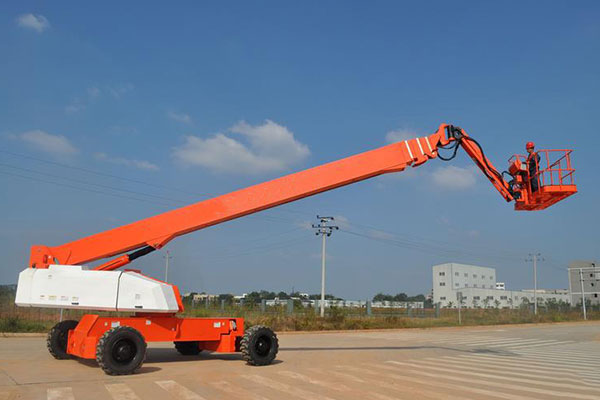Scissor Lift vs. Aerial Work Platform: How to Choose
In the realm of construction and maintenance, accessing elevated work areas is a common challenge. Scissor lifts and aerial work platforms (AWPs) have become indispensable tools for professionals seeking efficient and safe solutions. While these terms are often used interchangeably, it’s crucial to understand the distinctions between scissor lifts and AWPs to make informed decisions for specific tasks.

Understanding Scissor Lifts:
Scissor lifts are versatile aerial platforms designed for vertical lifting. They consist of crisscrossing metal supports, resembling a set of linked scissors, which extends when the platform is raised. These lifts are primarily used for indoor applications where a straight vertical lift is sufficient, such as maintenance tasks, installation, and painting projects.
Key Features of Scissor Lifts:
- Vertical Movement: Scissor lifts are known for their straight vertical ascent, making them ideal for tasks that require height without the need for extensive horizontal reach.
- Stability: The design of scissor lifts provides a stable platform, ensuring safety and stability during elevated tasks.
- Electric or Hydraulic Power: Scissor lifts are commonly powered by either electric or hydraulic systems, contributing to their eco-friendly and energy-efficient nature.
Understanding Aerial Work Platforms (AWPs):

Aerial work platforms, on the other hand, encompass a broader category that includes various types of lifting equipment, such as boom lifts, cherry pickers, and personnel lifts. AWPs are characterized by their ability to maneuver both vertically and horizontally, making them suitable for a wider range of applications, especially those requiring outreach.
Key Features of Aerial Work Platforms:
- Versatility: AWPs offer greater versatility with their ability to extend horizontally, providing access to difficult-to-reach areas and offering flexibility in various job site layouts.
- Articulating or Telescoping Booms: Aerial work platforms often feature articulating or telescoping booms, allowing for precise positioning and outreach capabilities.
- Suitable for Outdoor Use: Unlike scissor lifts, many AWPs are designed for outdoor use, with features such as all-terrain tires and robust construction to navigate rough terrains.
Choosing the Right Equipment:
The decision between a scissor lift and an aerial work platform depends on the specific requirements of the task at hand. Consider the following factors when making a choice:
- Task Requirements: Evaluate whether the job necessitates a straightforward vertical lift or if horizontal reach and flexibility are essential.
- Indoor vs. Outdoor Use: Determine whether the equipment will primarily be used indoors or outdoors, as this will impact the choice between a scissor lift and an AWP.
- Terrain Conditions: Consider the nature of the job site, especially if it involves uneven or rough terrain, as this may influence the choice of equipment with better adaptability.
Conclusion:
While both scissor lifts and aerial work platforms serve the common purpose of providing elevated access, understanding their differences is crucial for making the right choice. Scissor lifts are ideal for vertical lifting in indoor environments, offering stability and simplicity. Aerial work platforms, with their versatility and outreach capabilities, are better suited for tasks that demand more maneuverability and flexibility, especially in outdoor settings. By carefully assessing the specific needs of each job, professionals can optimize productivity and safety with the appropriate lifting equipment.

